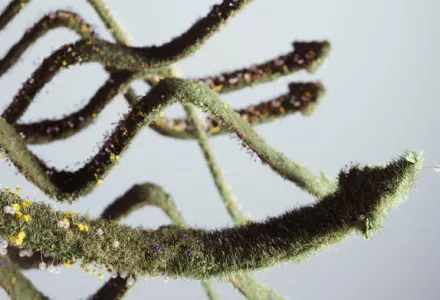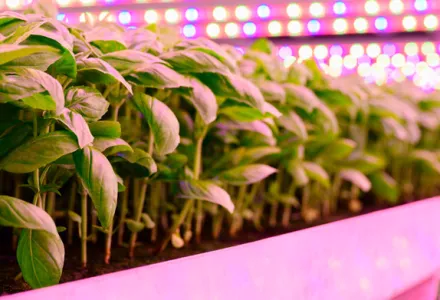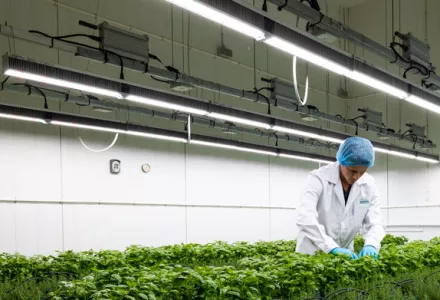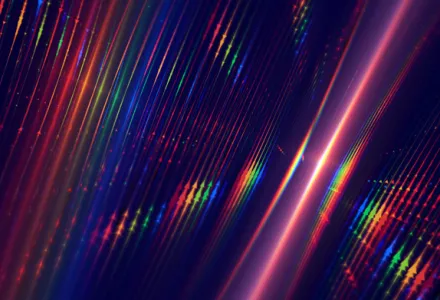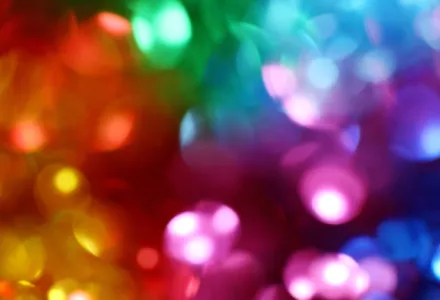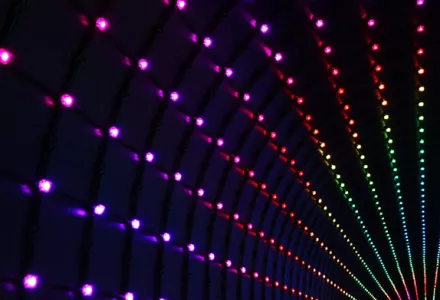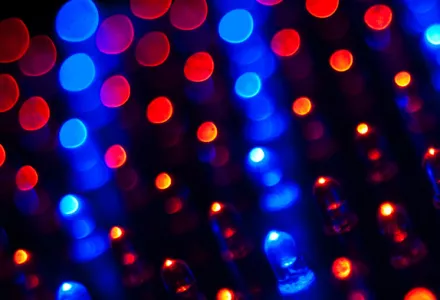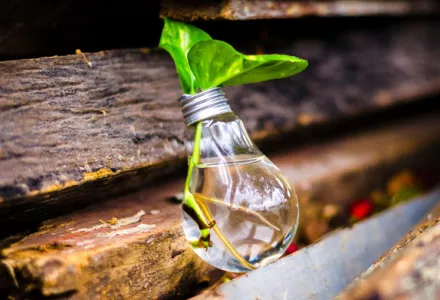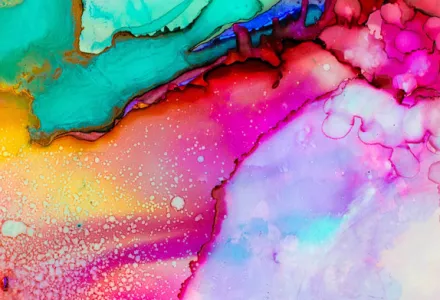Lighting for growing my plants… Hmm, where do I start? What do I need? What should I consider? What is light really? So many questions, a little basic knowledge starts to make things a lot easier.
Even plants can’t survive without light
Of course, sunlight is undoubtedly the cheapest source of light for growing plants but it is not always available. With an indoor grow light to grow your own, it is possible to gain control over your plants and grow effectively all year round!
Indoor plant grow lights commonly consist of three individual items:
- A reflector, which protects the lamp and directs the light to where you want it, as well as providing up to 30% extra light for nothing since there is no light lost but is bounced back on to the plants;
- The ballast box, containing the components necessary to power the lamp and to regulate the current when the lamp is running;
- The lamp itself.
Plant grow lights, what do I need to know?
The first factor is to choose the colour of light required, whether you need a warm or cool light source. The temperature of light is expressed in degrees Kelvin and is known as the correlated colour temperature or CCT, and relates to actual thermal temperature. High intensity discharge (HID) lamps and fluorescent light sources all have CCT ratings and this indicates how warm or cool the light source is, for instance a lamp with a CCT of 2700 Kelvin is considered warm, 4200 Kelvin is considered neutral and 6000 Kelvin is considered cool.
CCT ranges of the plant light
5000-7000 Kelvin: Strong Blue Light
Promotes bushy growth. Ideal for the rapid growth phase of plants. Greatly enhances all round plant growth when used with super high output, high pressure sodium or 3K warm metal halide lamps.
4000 - 4200 Kelvin: Cool White Fluorescents
Can be used to supplement blue lighting. Ideal for propagation.
4000 Kelvin: Neutral Metal Halide
Best single light source for plant growth, producing shorter, bushier growth than 3700 Kelvin and colour rendition. Used in general plant lighting.
3700 Kelvin: Softer Metal Halide (coated)
This coated lamp is used for general plant lighting and for more rapid growth than 4000 Kelvin produces.
2100 - 2700 Kelvin: High Pressure Sodium Lamps
Redder colour mix, ideal for the fruiting and flowering stages as well as supplementary greenhouse lighting.
So can I tell by looking at it whether the plant light is suitable?
Basically, no. Historically the output of HID lighting has been measured in lumens. This method of measuring light output favours light at the yellow end of the spectrum, as this is light that the human eye is most sensitive to. As a result, this method of measuring light largely ignores the light produced at the blue and red ends of the spectrum. However, it is precisely the light at the blue and red ends of the spectrum that a plant needs to thrive!
What types of plant lamps are there?
There are two main types of lamps used in horticulture today:
High Intensity Discharge (HID) lamps
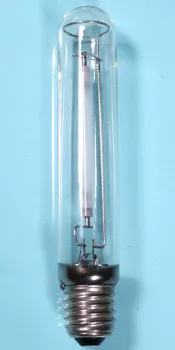
Simple to use and covers a large area for almost any type of plant.
HID lighting can be divided into two categories: Metal Halide (MH) and High Pressure Sodium (HPS).
Metal Halide (MH)
Metal Halide (MH) lamps give off an abundance of blue light imitating the light of spring and summer making them the best light for propagation and vegetative growth, promoting short internodal length.
High Pressure Sodium (HPS)
High Pressure Sodium (HPS) lamps produce ‘redder’ light and can be compared to the light of an autumn sunset. More yellow/red colour in the spectrum and less blue promotes a higher flower-to-leaf ratio in flowering and fruiting plants. HPS lights are widely used to extend the natural ‘day length’ that a plant is subjected to thereby imitating summer conditions.
Since the blue light provides all the blue light necessary, the HP sodium is used during lowlight hours and during total darkness. If you are growing indoors and without any natural light then a combination of the two lamps is ideal, especially when used with a light mover.
Fluorescent grow lights
Fluorescent lamps are very energy efficient and therefore ideal for the green grower. There are several categories: strip fluorescents, compact fluorescents (CFL) with a high wattage design, warm or cool light and high or low wattage. The fixtures for these lamps usually come complete with lamp holders and built-in ballast. Your local hydroponics dealer will show you some different models.
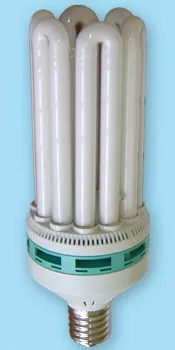
Fluorescent lighting has a lower intensity than metal halide or sodium lamps and due to their low heat output they will not dry out the growing media when placed close to the plant. This makes them ideal for propagation and early vegetative growth as well as for orchids and other plants that need lower light conditions. Because of their low heat output they can also be kept approximately 1 inch from the plants, and do not require ventilation to remove excess warmth. This means you are getting more usable light to your plant and maximising the output of your lamp.
For vegetative growth you should choose a ‘cool white’ lamp. This is also acceptable for flowering, but a ‘warm white’ light will be better as it is stronger in the red end of the spectrum which is more suitable for flowering. Use fluorescent lights only for seedlings and clones, for supplementing daylight and for vegetative growth. A HID Sodium Lamp is always recommended for flowering due to its high light output and it is more efficient when you look at what your plants produce for the number of watts you put in.
Compact Fluorescents
Compact Fluorescents are exactly what their name implies; they generate greater light intensity than their strip tube cousins and come in a variety of wattages. Due to their small size they are very ‘versatile’ and can fit into most normal E40 lamps fittings.
If you are only growing vegetative crops such as herbs or lettuce you should find that one compact fluorescent lamp will be sufficient for a small area.
Does size matter?
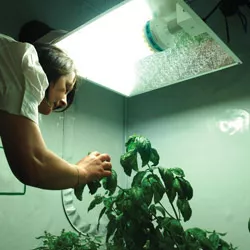
The size of lamp required depends on the size of the growing area, and the type of plants you wish to grow. Plants that require a lot of light such as herbs and vegetables will need between 20 and 60 watts of light per square foot of growing space. If no natural light is present, a 400 watt metal halide in a 3 x 3 foot area will provide 45 watts per square foot, compared to 25 watts per square foot in a 5 x 5 foot area. Similarly, a 1000 watt metal halide in a 5 x 5 foot area will provide 40 watts per square foot, compared to 20 watts per square foot in a 7 x 7 foot area. Proper reflectors, light movers, and reflective material on walls will considerably increase the intensity and efficiency of these lights. As a basic rule, the higher the intensity and the broader the spectrum, the greater the benefit.
But remember – a 1000 HPS lamp is not the same as four 250 HPS lamps. 250w lamps don't have anywhere near the intensity needed to penetrate thick canopy or tall, bushy plants. We know from experience that it is almost impossible to grow very tall bushy plants with a 250w lamp!
Here is a basic guideline for lighting a grow room for good growth using HID Lamps:
| Wattage | Coverage |
|---|---|
| 1000 watt | 4 to 5 feet (1.3 to 1.5 meters) |
| 600 watt | 3.5 feet (1 to 1.2 meters) |
| 400 watt | 2.5 to 3 feet (0.8 to 0.9 meters) |
| 250 watt | 2 feet (0.6 to 0.7 meters) |
These guidelines assume you have a good reflector around your bulb as well as reflective wall coverings. You can also increase coverage using a light mover.

